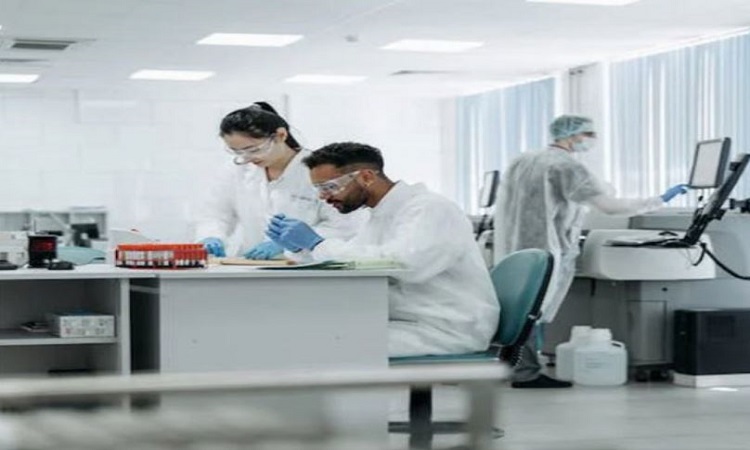Study reveals how wearable brain scanner can evaluate brain function
For the first time, new research has shown that a wearable brain scanner can evaluate brain function when people are up and walking around. Read further on Dynamite News:

Nottingham: For the first time, new research has shown that a wearable brain scanner can evaluate brain function when people are up and walking around. This discovery could aid in the understanding and diagnosis of a variety of neurological conditions that impair mobility, such as Parkinson's disease, stroke, and concussion.
Researchers from the University of Nottingham's School of Physics created a new magnetic field control system design to enable this revolutionary technology. This enables for far greater subject movement than was previously allowed. The findings were published in NeuroImage.
The unique wearable brain scanner system uses small LEGO-brick-sized sensors -- called optically pumped magnetometers (OPMs) -- to measure magnetic fields generated by cellular activity in the brain -- a technique called Magnetoencephalography, or MEG. These sensors are incorporated into a lightweight helmet. The unique design means the system can be adapted to fit anyone, from newborns to adults, and sensors can be placed much closer to the head, dramatically enhancing data quality. This is a step change from conventional brain scanners that are large and fixed and require the patient to stay very still during scanning.
Also Read |
Brain waves can predict cognitive impairment in Parkinson's disease: Study
However, OPMs must operate at precisely zero magnetic field to become sensitive enough to measure brain signals, this means they must be operated inside a magnetically shielded room (MSR). This room must contain additional equipment that allows precise control of magnetic fields at a level 50,000 times smaller than the Earth's magnetic field. Existing solutions to this problem used complex wire patterns to generate cancellation fields over small, fixed regions. This allowed people to move their heads whilst seated, but was unable to allow ambulatory movement.
The Nottingham team have now designed a 'matrix coil' system formed from multiple simple square coils. The coil currents can be reconfigured in real time to compensate magnetic fields over a moving region that can be flexibly placed within the coils, giving much greater scope for people to move during a scan.
Niall Holmes, Research Fellow from the University of Nottingham, has led this study and said: "By using the matrix coils to allow greater movement we can, for the first time, realise many scanning scenarios that would have previously been considered impossible, but that have the potential to significantly expand our understanding of exactly what is happening in the brain during movement, neurodevelopment and in a range of neurological issues."
Also Read |
Study reveals how brain stimulation improves gait function in Parkinson’s disease patients
Professor Matt Brookes leads MEG research in Nottingham and said: "Just 5 years ago, the idea of acquiring high resolution images of human brain electrophysiology whilst people walk around a room would have seemed like something from science fiction. The matrix coil has made this a reality! The applications span a huge area, from basic neuroscientific questions like how do young children learn to walk, to clinical challenges like why are older people prone to falling. It's incredible to think how far this technology has come, and even more incredible to imagine where it's going."
The University launched the spin-out company Cerca Magnetics in 2020 to bring OPM-MEG research systems to the market. The wearable system has been installed in a number of research institutions across the globe, including Young Epilepsy's Health and Research Centre in the UK. The team are currently working towards gaining clinical approval of the Cerca System to bring it closer to being used in clinical settings.
Niall added: "We are excited to work with Cerca to incorporate this new coil design into the commercial systems and to see what new studies will be enabled by our work." (ANI)
 Dynamite News
Dynamite News 